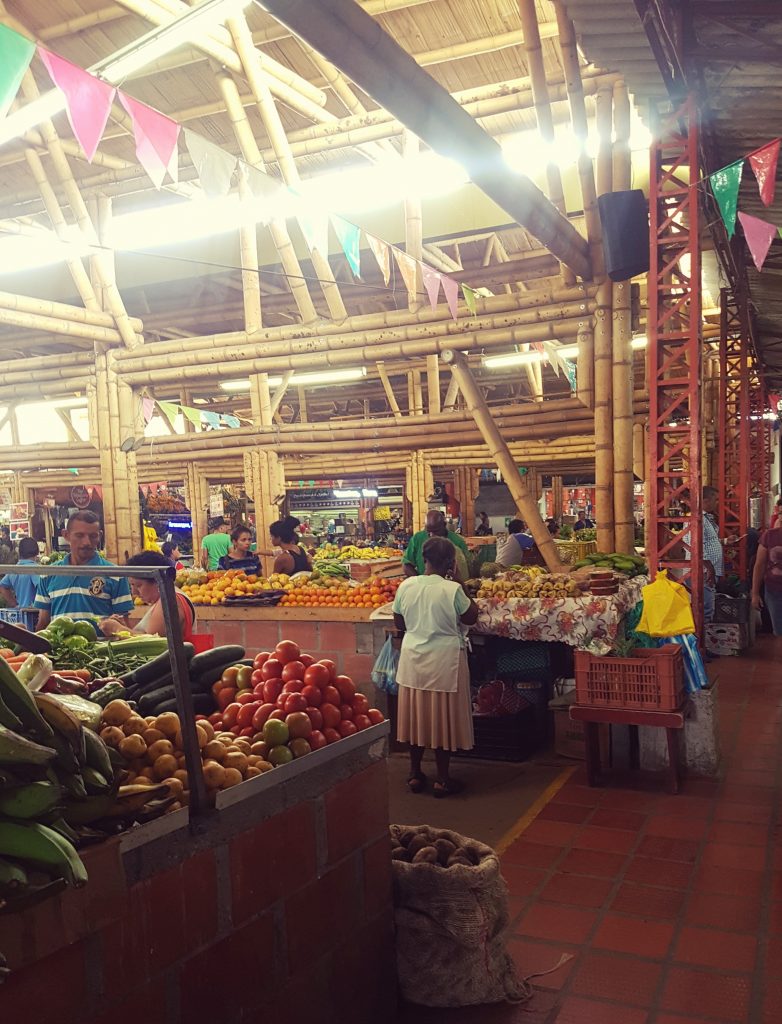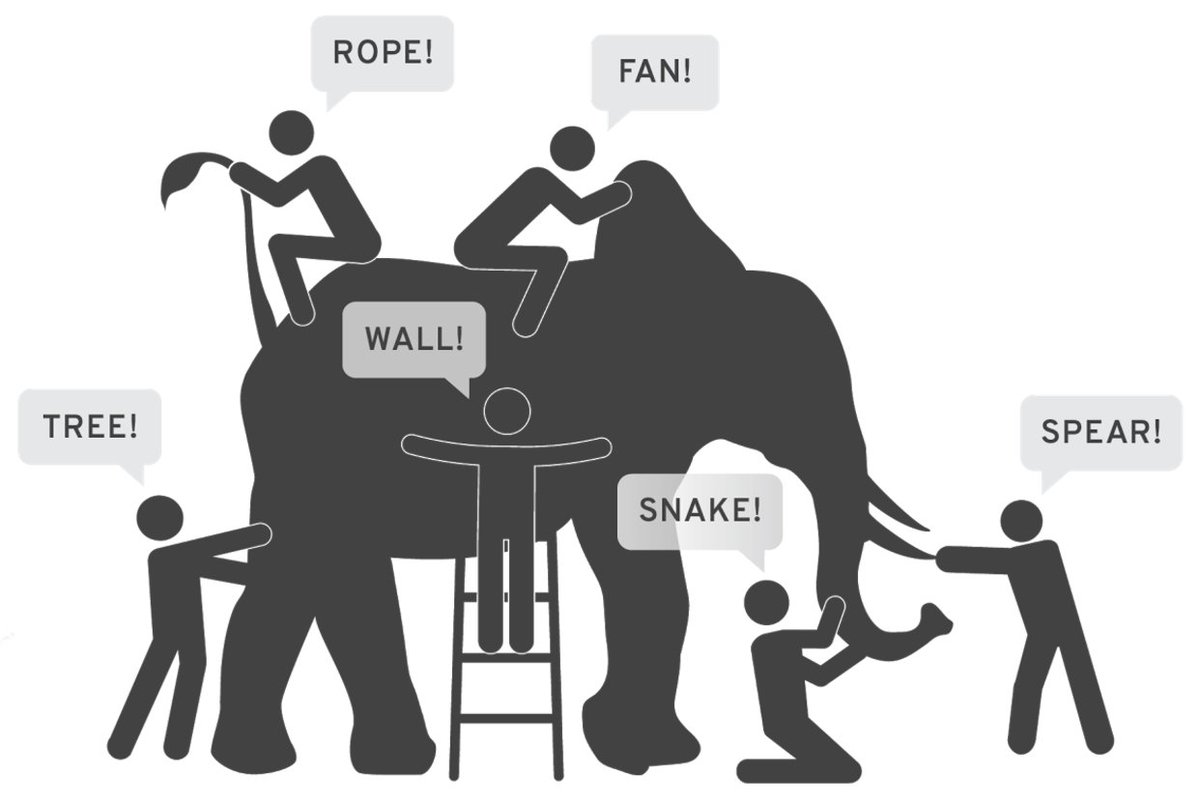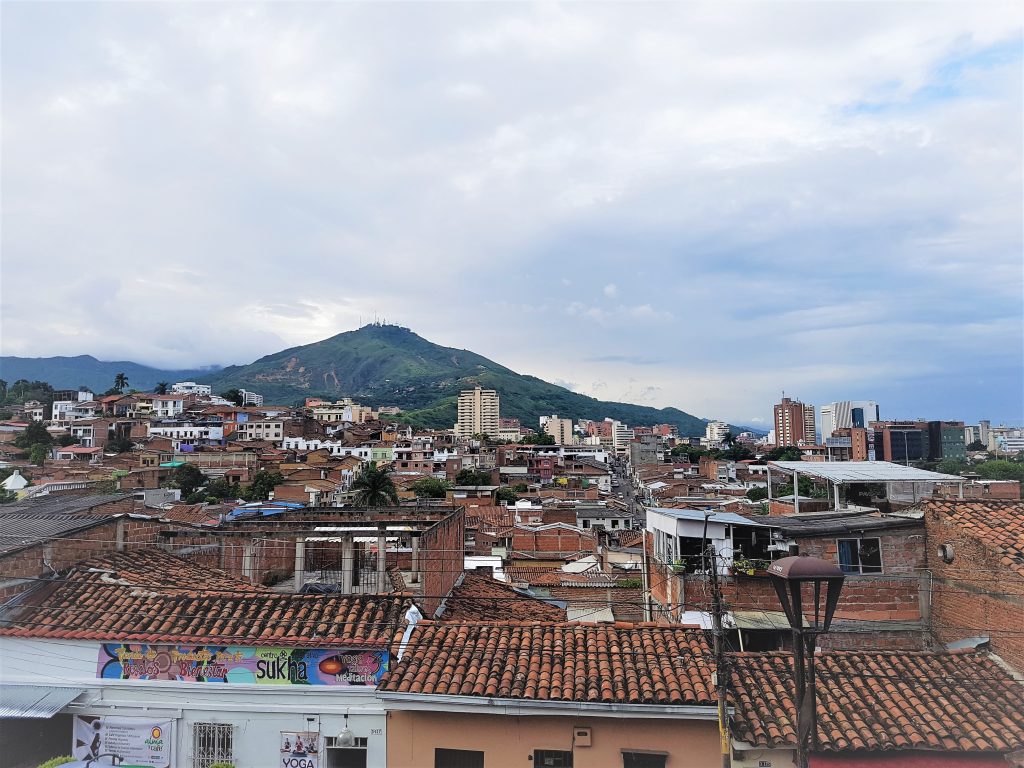
Now it’s the end of my fourth (!) week at CIAT, in Cali-Palmira, Colombia, I think it might be time to explain a little why I am here—or rather, why CIAT wanted to host a Masters student to start working on a project looking at what we think we should be eating, and where and whether this may be possible with current food supplies. And, while I explain the broader operating context of my research, I’ll also touch on where the system of interest for my project sits within the broader food system.
Introductions to food systems approaches
My project at CIAT—the International Centre for Tropical Agriculture, or el Centro Internacional de Agricultura Tropical—sits within the Sustainable Food Systems research theme of the Decision and Policy Analysis area. The Sustainable Food Systems theme is fairly new to the CIAT agenda, in its current form at least. Born out of earlier projects looking at inclusive markets, climate smart value chains, and low emissions development (to name a few), the SFS strategic initiative was launched in 2017 with the ambition:
For CIAT to become truly holistic in its conceptualisation of modern food, agriculture, environment and human health challenges, while maintaining focus on its entry points for research that leads to solutions.
— CIAT Sustainable Food Systems Strategic Initiative

Before arriving at CIAT, and being introduced to its approach to food systems, I had assumed that its perspective would be more agricultural production-focused, and perhaps delving into the value chains space for the purpose of building markets and market-readiness to maximise opportunities for returns to the farm gate. And before I was exposed to the wider CGIAR system, and the CCAFS research program particularly, during my studies in the MSc CCAFS program this last year, I would not have even thought that a tropical agriculture research institution would be looking at food.
Food security and nutritious diets no longer simply about productivity or even availability or affordability of food. They are also about quality and utilization and distribution of food, about rural and urban consumers’ behaviours and preferences, about the incentives and disincentives of the food processors and sellers, and about stability and resilience of food supply chains in cities and in connected rural areas. [And more… I would add]
— CIAT Sustainable Food Systems Strategic Initiative
Unsurprisingly, surprised
My assumptions and the ways in which CIAT is now approaching food systems is somewhat emblematic of the broader state of play with food systems policy. On the one hand, institutions like CIAT are fully cognisant of the dynamic way in which food systems operate—that they involve multiple actors with various interests and influence, from ‘farm to fork’ (or really, from biological systems and back again, or, as the SFS team put it, ideally from ‘from agroecosystem integrity to diet and back again’); working within different social and environmental conditions, affecting the behaviour of other actors in the system and the environmental processes upon which this all depends.

If CIAT, or anyone else working in this space, wants to influence these systems to bring about better outcomes for farmers, consumers or the environment, they have to be aware that this cannot be achieved by only intervening in agricultural practices (what is produced and how it is done), nor for that matter, by only trying to get consumers to change their eating habits. While this all sounds pretty obvious, the food systems approach is actually fairly new to agricultural research (Norgaard got the ball rolling in 1984), more so for prominent institutions such as the FAO (GloPlan, 2016; Eriksen, 2008). Generally speaking, it is not yet reflected in national policies; different ministries and disciplines continue to work separately on overlapping issues. Even from a nutrition-focused perspective, the High-Level Panel on Food Security and Nutrition (HLPE) recommend:
States should, in collaboration with affected stakeholders:
– Recognize the diversity of food systems (traditional, mixed, modern) and design context-specific policies and programmes that support the co-existence of diverse food systems and diets.
— HLPE, 2017
– Integrate a nutrition-focused food system approach into national development, health and economic plans.
– Foster policy coherence in order to improve diets and nutrition, through enhanced coordination across sectors, including agriculture, environment, energy, water, sanitation and hygiene (WASH), health, education, fiscal policies, economic and social development.
So, my preconceptions about CIAT’s role in this space aren’t really that surprising. They shouldn’t be, but it remains the norm that agricultural institutions work on agriculture alone (and health on health etc.). Indeed, much of the emphasis in driving systems approaches is trying to get people from either camp (and others) to at least talk to each other, and then start to collaborate on common objectives. While it would be preferable for these institutions to understand and employ systems-based approaches, all actors have their own role to play, and a series of one-man shows wouldn’t be very effective anyway.
So, where does my project fit?
The central challenge for the coming decades will be to deliver healthy diets, but also to ensure the sustainability of the systems that deliver those diets.
— CIAT Sustainable Food Systems Strategic Initiative

My project is looking at, globally, what we think we should be eating and how well this is reflected in the current food supplies of countries across the world. In a food systems framework, the points of interest are at the ‘end’ of the food chain (diets) but also at the ‘beginning’ (what we are growing and trading). In a direct sense, besides international trade, the value chains components of the food system, such as food storage, transport, processing and transformation as well as the food environment affecting a person’s access to foods is out of my scope. So too is how food is prepared in the home (or restaurant, street stall etc.) and what is lost along the way.
In this framing of the systems influencing healthy diets (or unhealthy ones for that matter)—the points of intervention—you might think of my project at starting at the top point under the food systems framework: agricultural production. We are asking, are we making the right foods available at this point in the system? Before we look to what might get lost (food waste) or distributed inequitably; or to what influences what people can and want to eat, is it safe and nutritious etc.
Approaching the system from another angle

I’m really pleased that CIAT has taken up the sustainable food systems approach in a more explicit way as (if you haven’t noticed already) I am in furious agreement about the importance of understanding this perspective, despite and because of its complexity.
This isn’t my first foray into food systems and systems-thinking more broadly. During my undergraduate degree, I undertook a one-year research project in human ecology at the ANU Fenner School of Environment and Society using a systems-thinking based approach to evaluate food security discourses of Australian institutions. My focus then was on inequitable access to nutritious food, so I was much more concerned with the points of intervention closer to the consumer—their food environment and the socioeconomic determinants of people’s agency in that environment. So, it’s been super interesting for me to consider issues further up the chain.
In that project we applied a systems-thinking approach to driving cultural adaptation for sustainability. On the left is the main approach we applied—Dyball and Newell’s ‘cultural adaptation template’ (2015). Essentially, this approach is underlined by a belief in the role of human culture in driving behaviour in human-environment systems, including food systems. I still find this simple model really useful as a starting point in considering anthropogenic sustainability problems:
- That society’s dominant thinking is influenced by the current state of the community (be that social, economic, small or large scale), human health and wellbeing, and the ecosystem i.e. are they ‘working’ or not? Why do we think this is? And what do we think we need to do about it? (Learning activities)
- This dominant thinking drives the state of the community, which impacts both human health and wellbeing and ecosystems (natural and built) through individual and collective activities affecting those systems.
- These interactions have social, environmental, human health and cross-sectoral feedback loops that can lead to positive or negative cultural change.

For a taste of the complexity of what you start out thinking are relatively simple systems of interest, above is what we came up with regarding ideas about the cost (and value) of healthy food as one of the perceived key variables determining food insecurity in Australia. The factors that we found feeding into the extent of healthy food consumption (and feeding back to each other) included: society’s perceptions about the value (economic, social, health and wellbeing, environmental, cultural etc.) of healthy food; the state of economic security (at an individual, community, national and international level); the prevalence of diet-related disease; quality of the foods available and whether this encourages demand-supply; productivity of landscapes to produce those food and the extent of food systems ‘infrastructure’ to support that food quality.
It’s been interesting to reflect back on what I learned all those years ago and have an opportunity to turn the system on its head, as it were, and see things from another angle. But, that’s the thing with systems, they keep coming back around.

-A